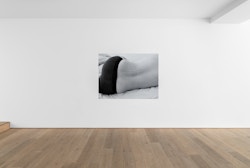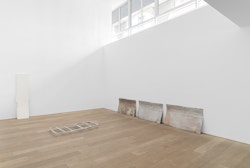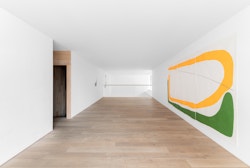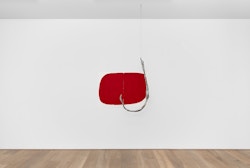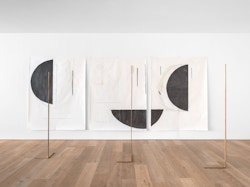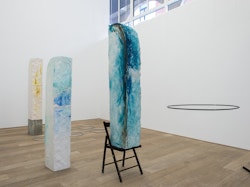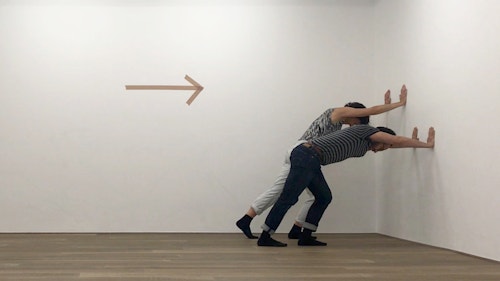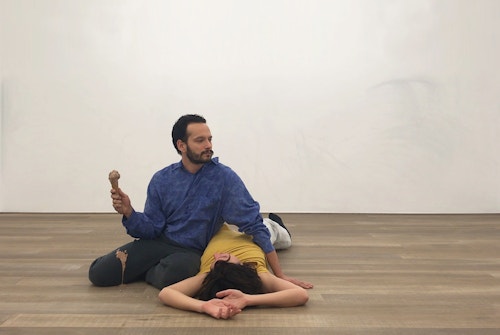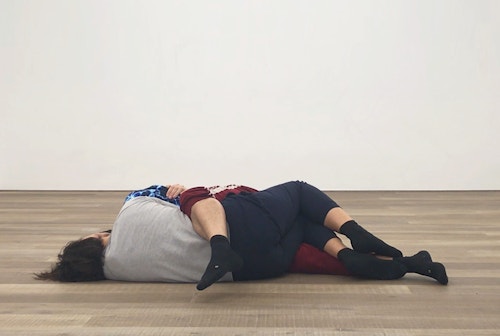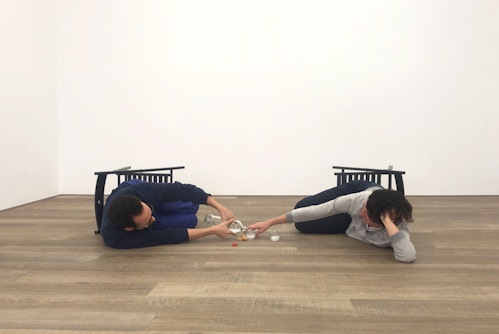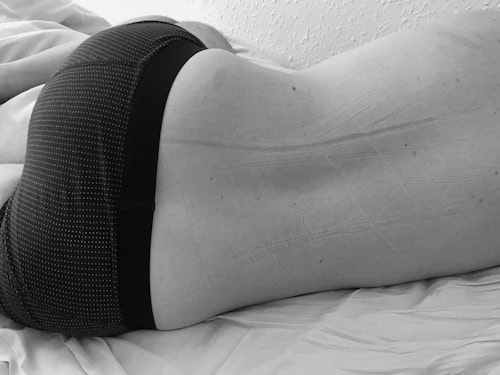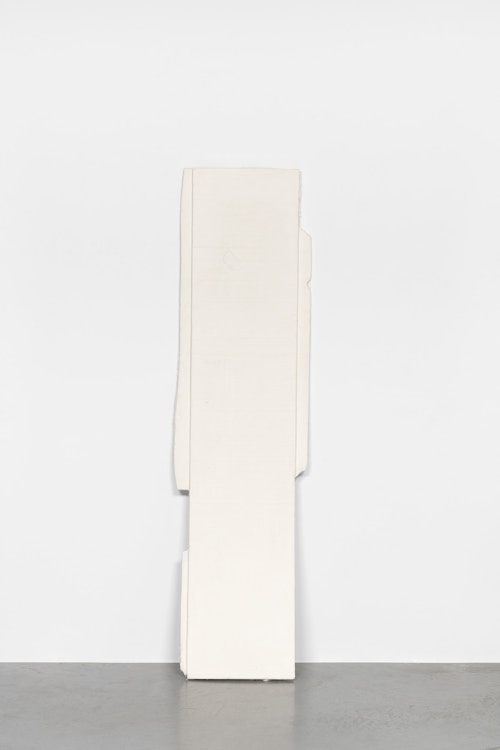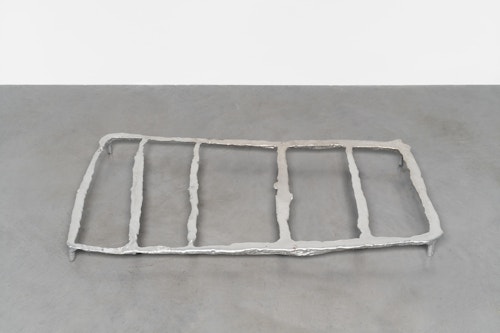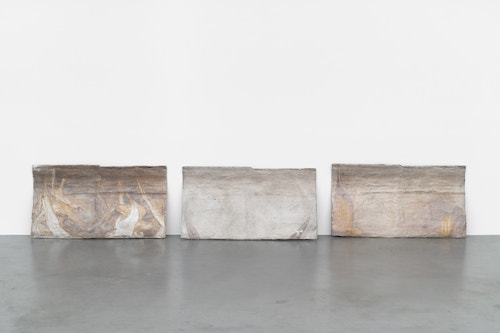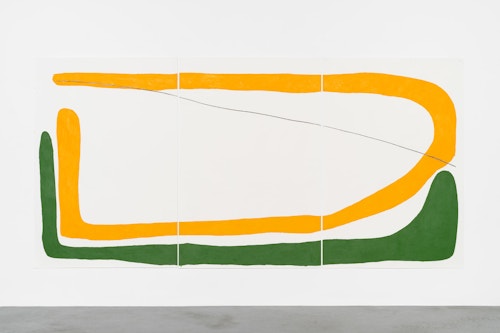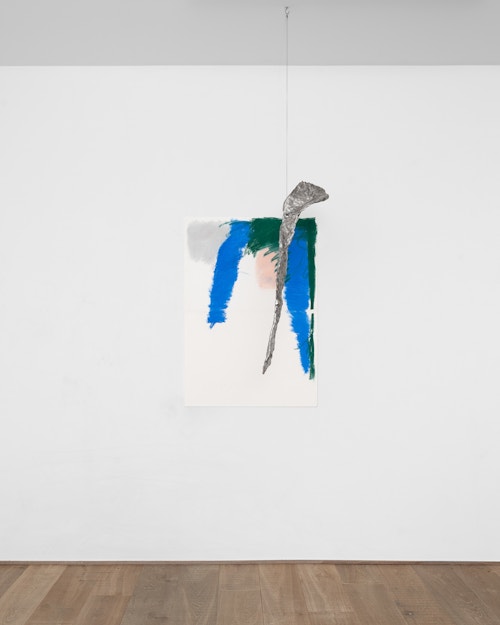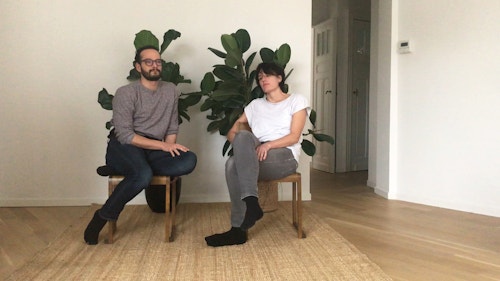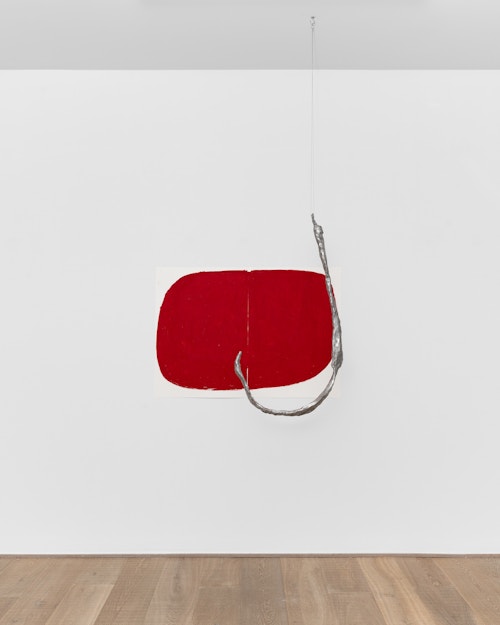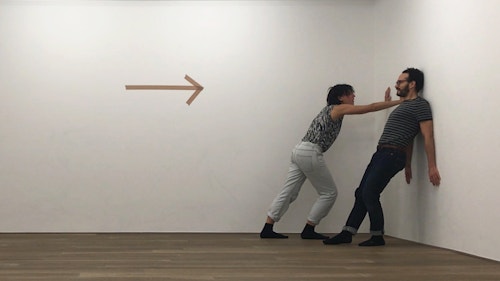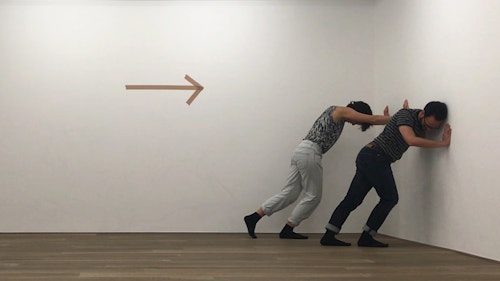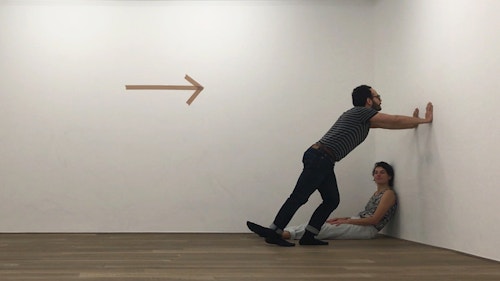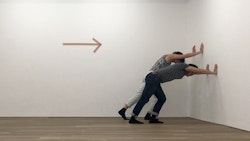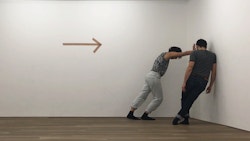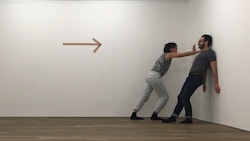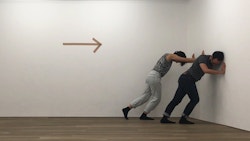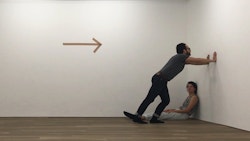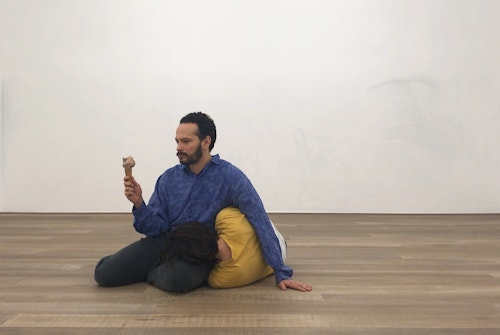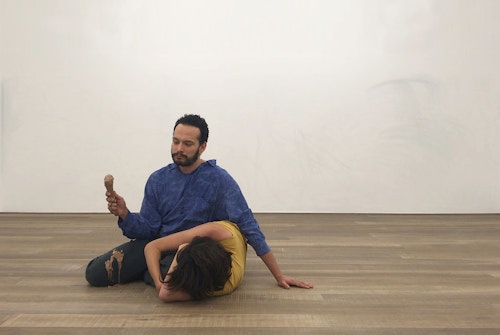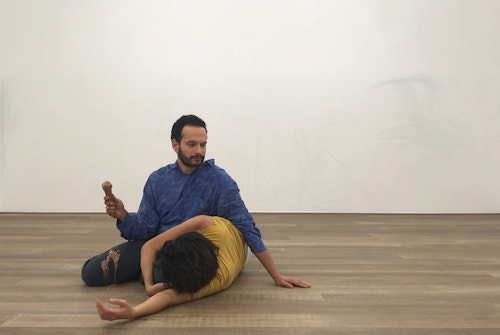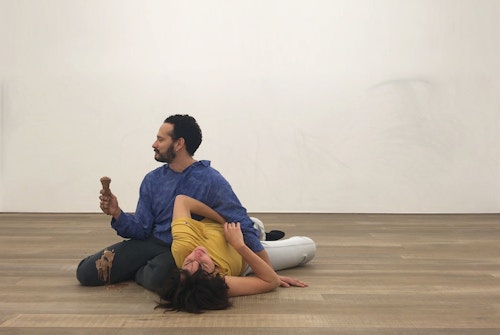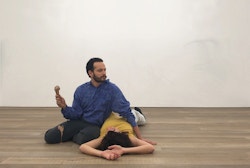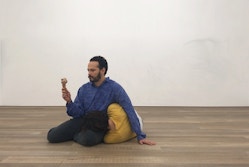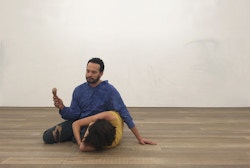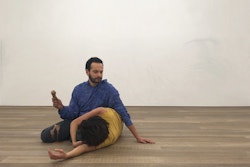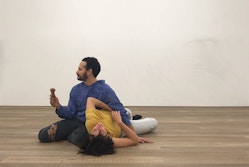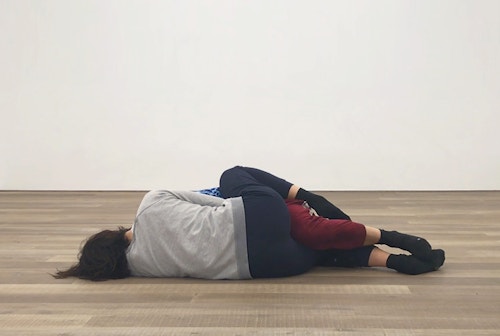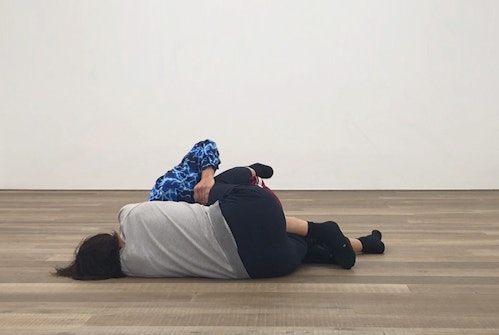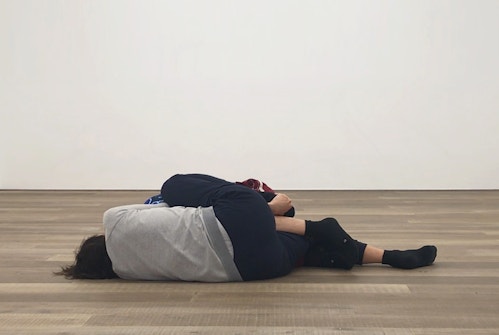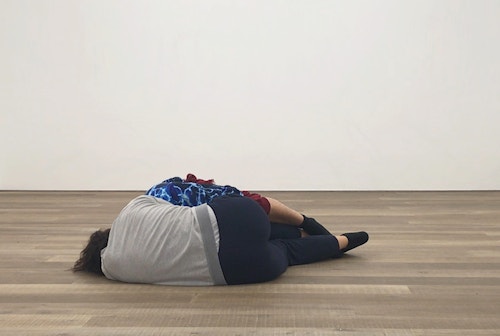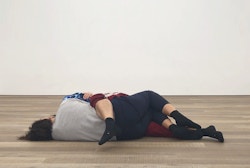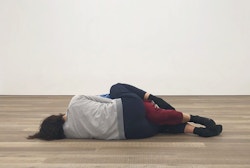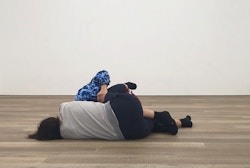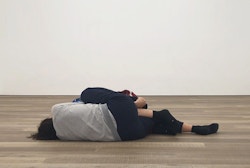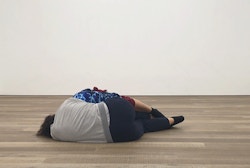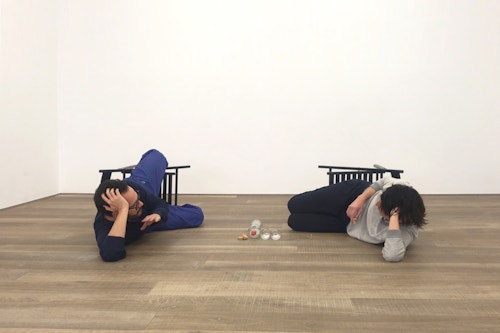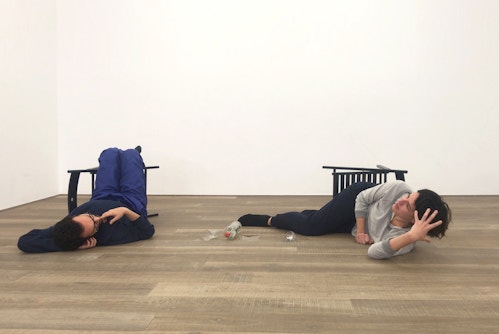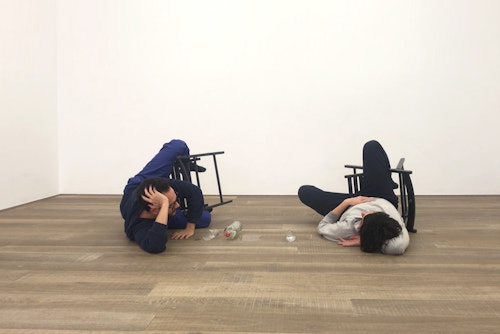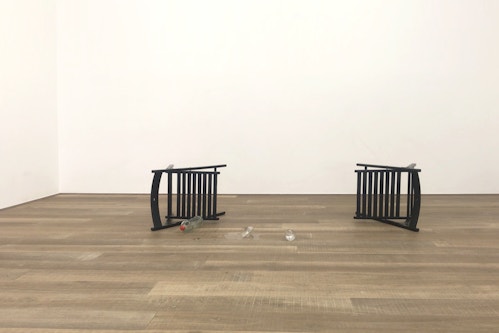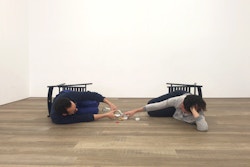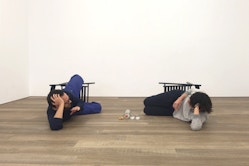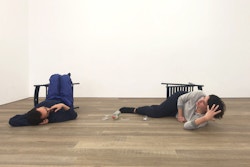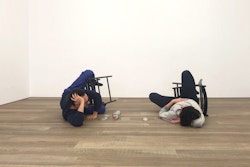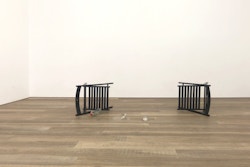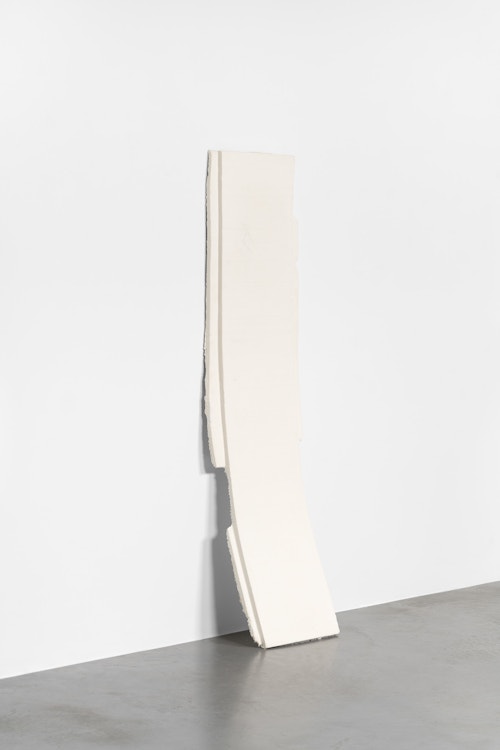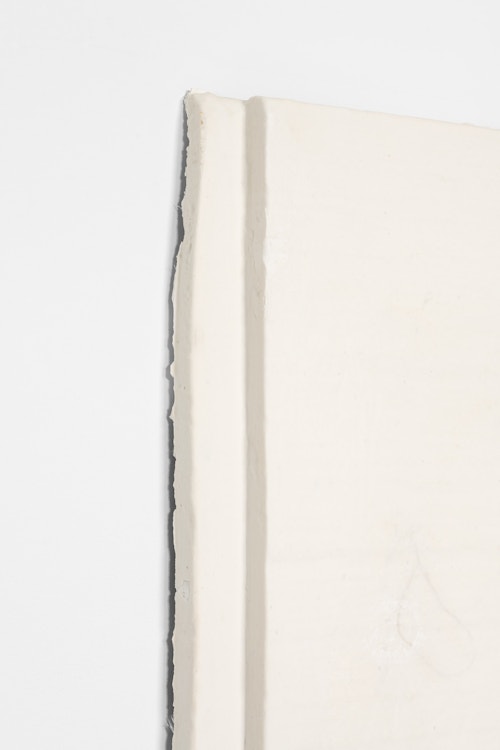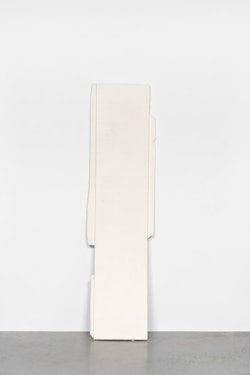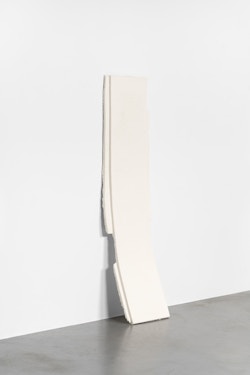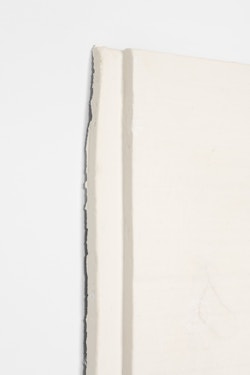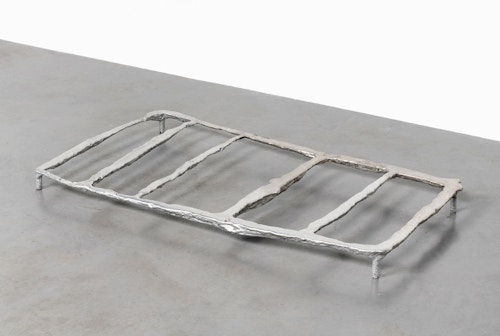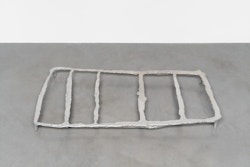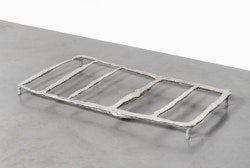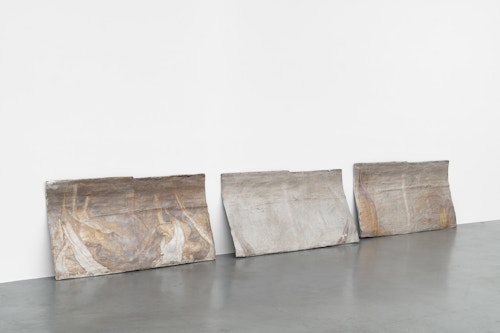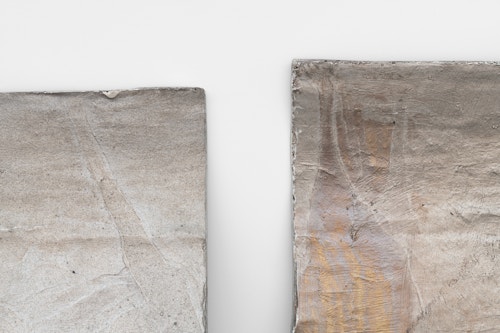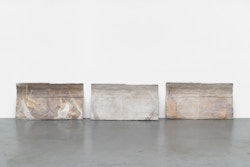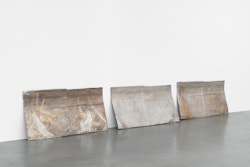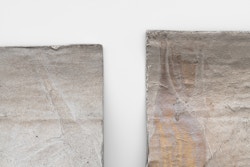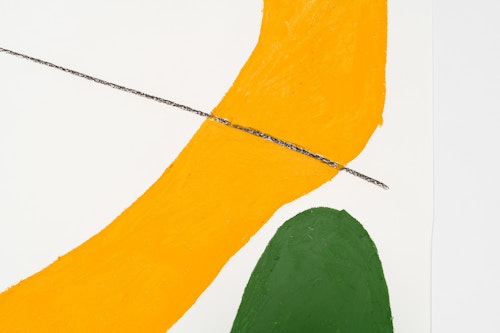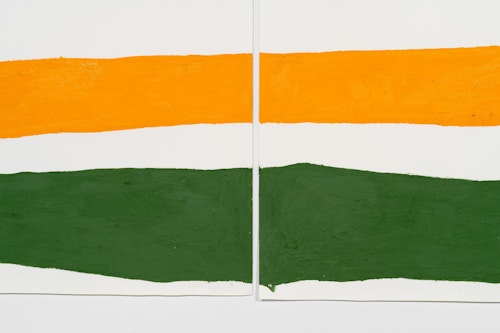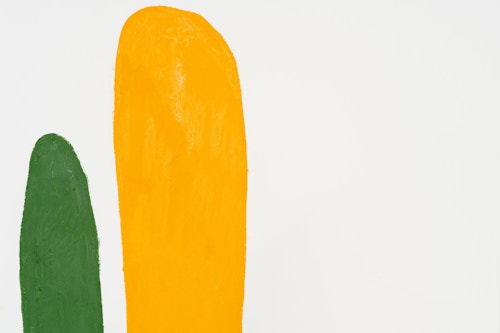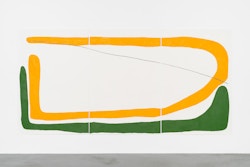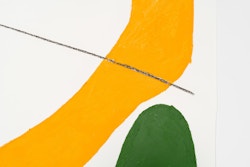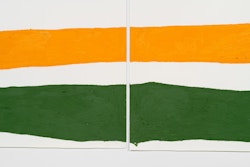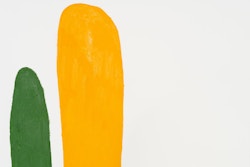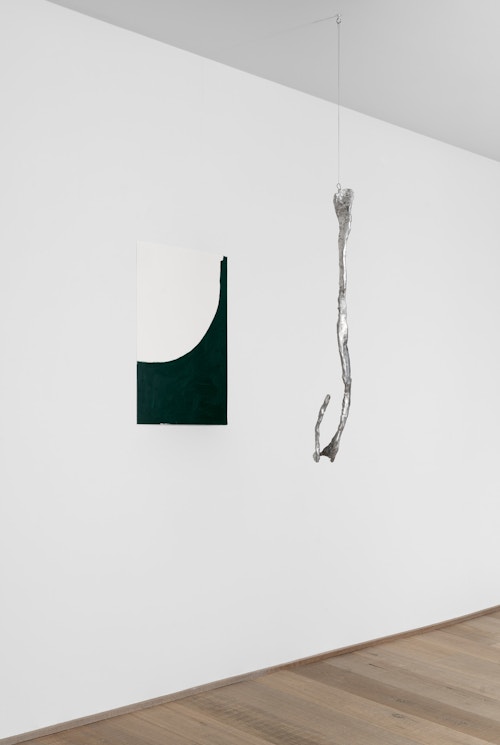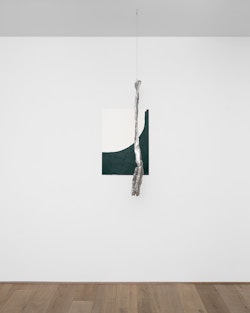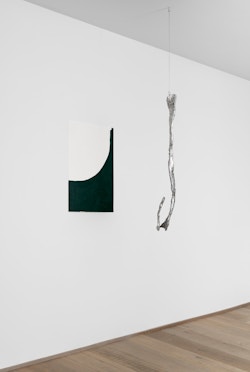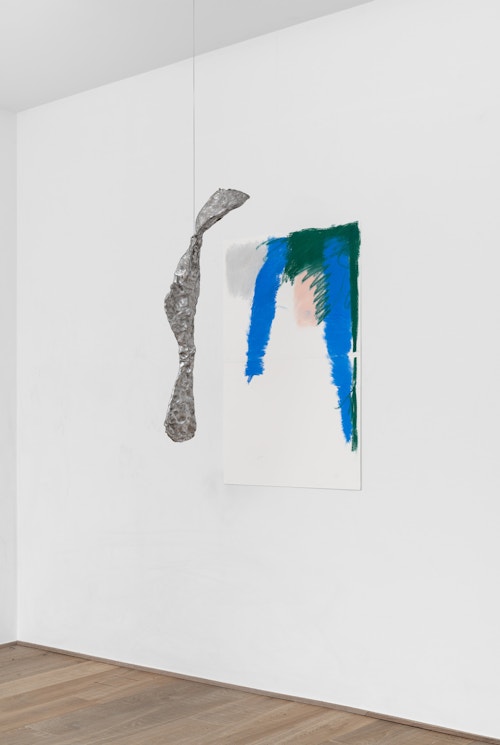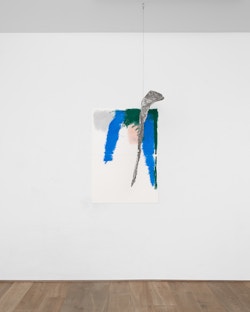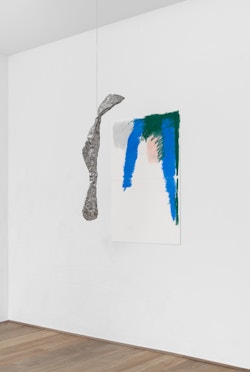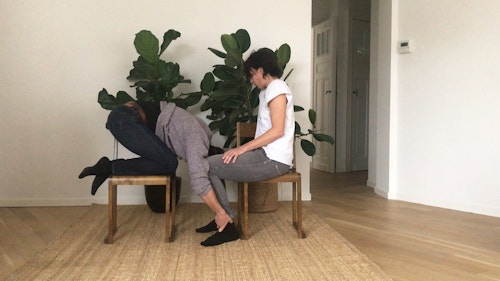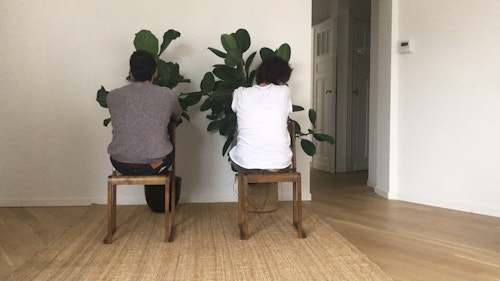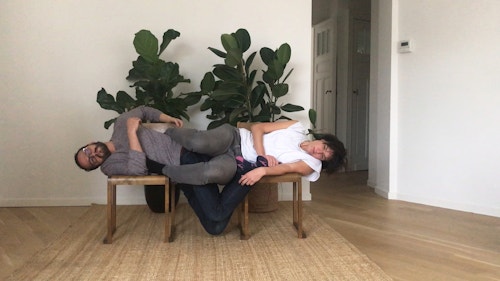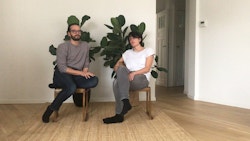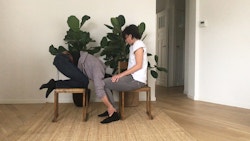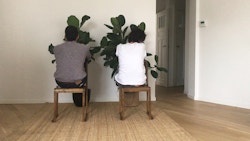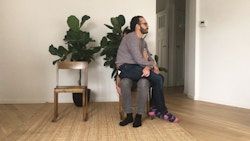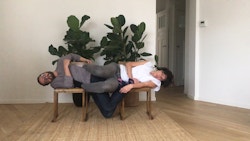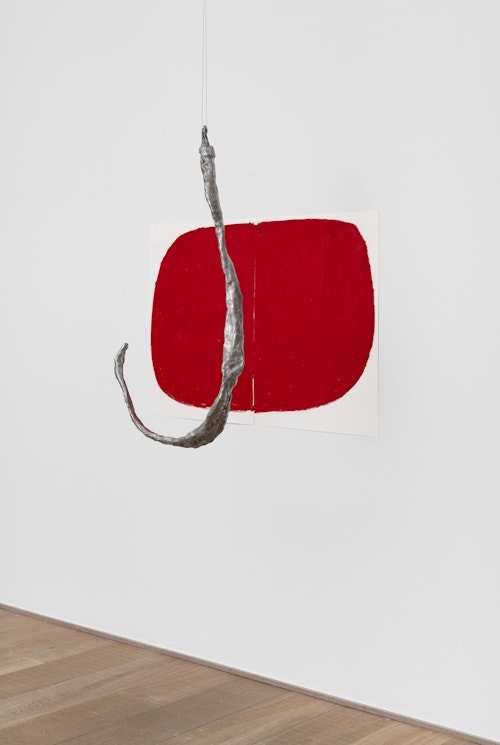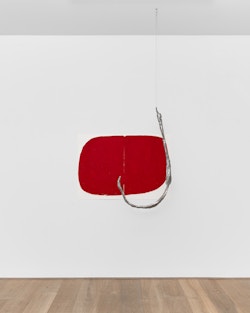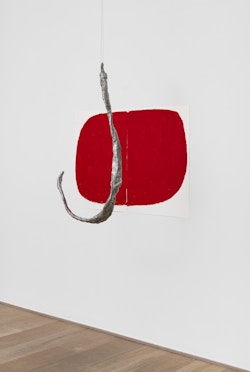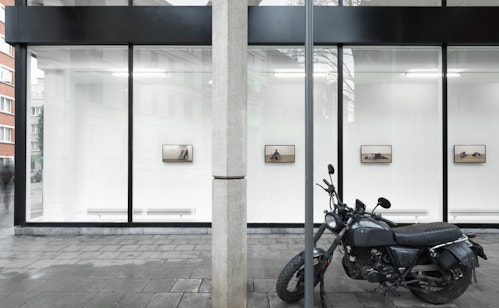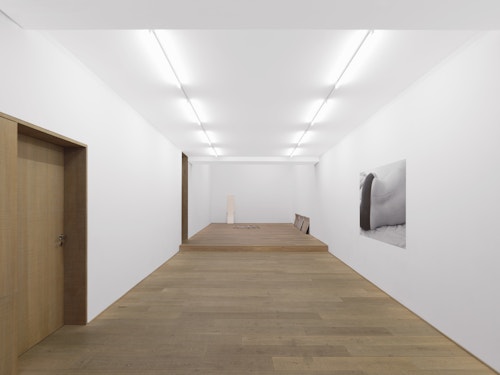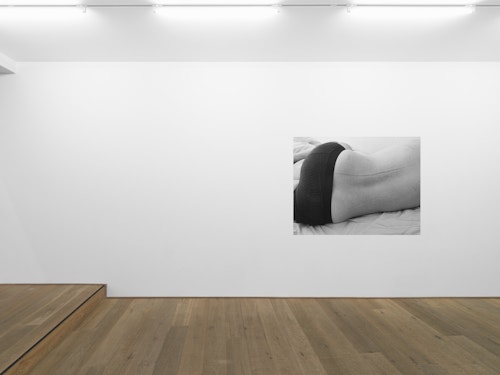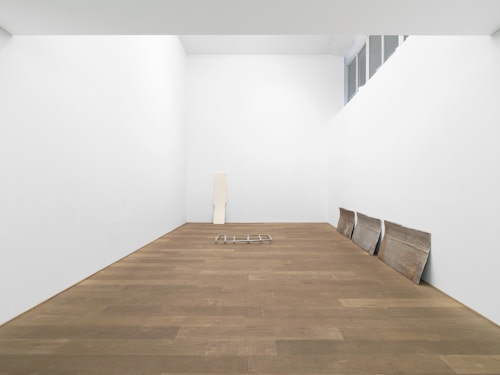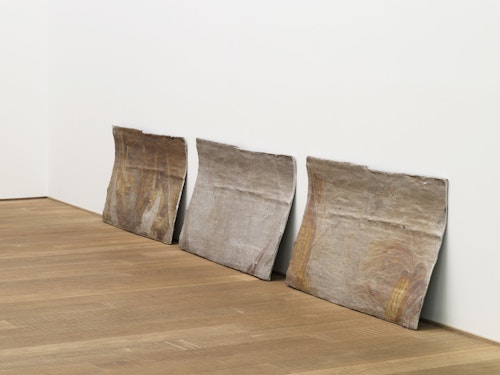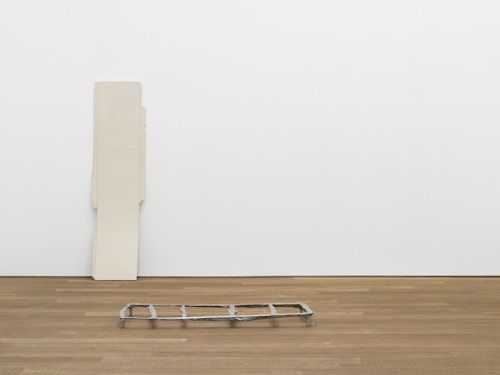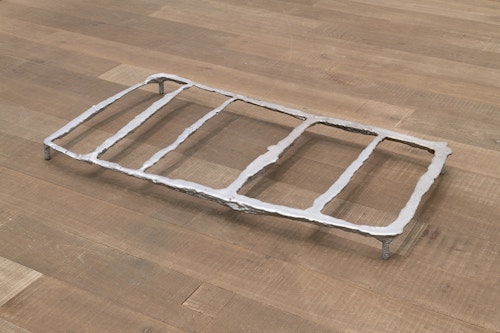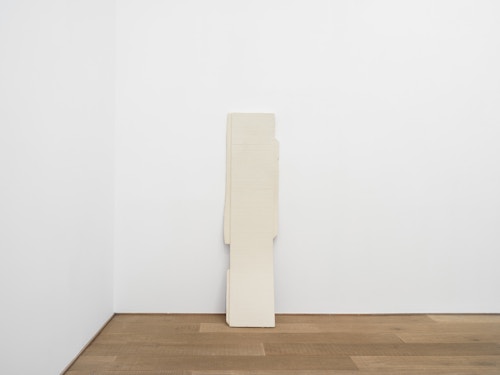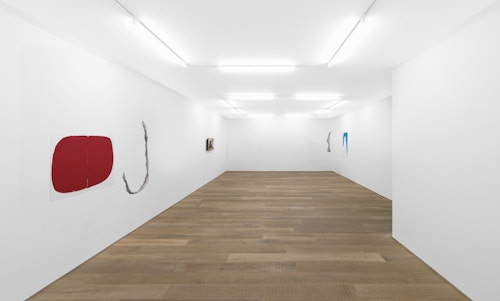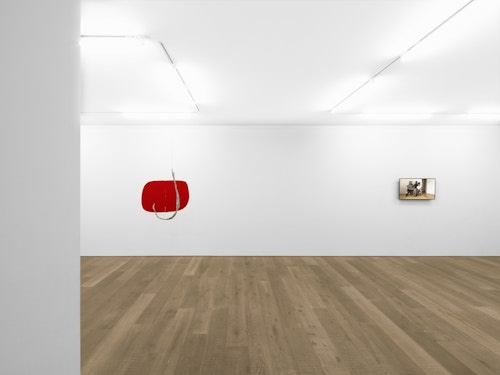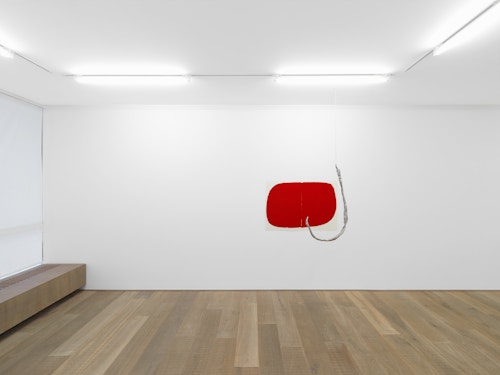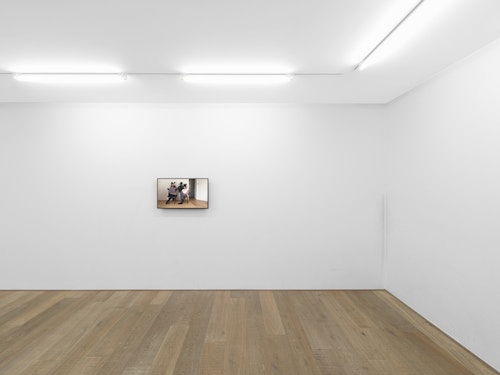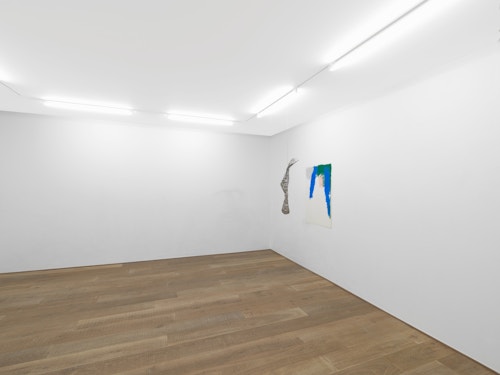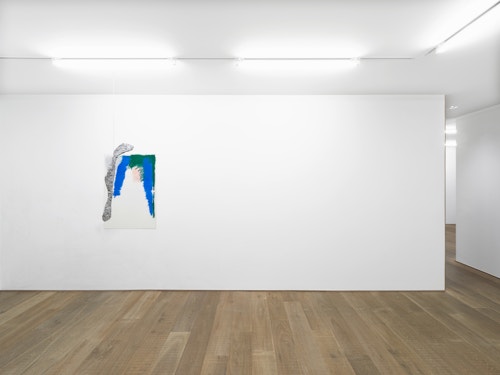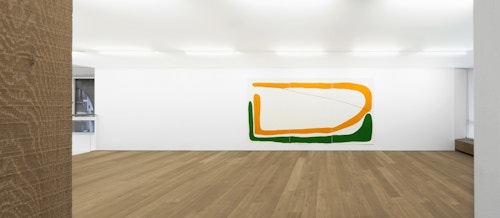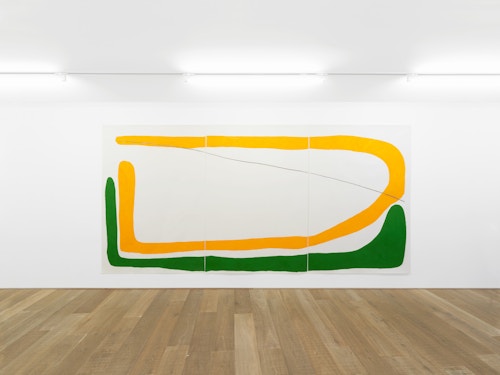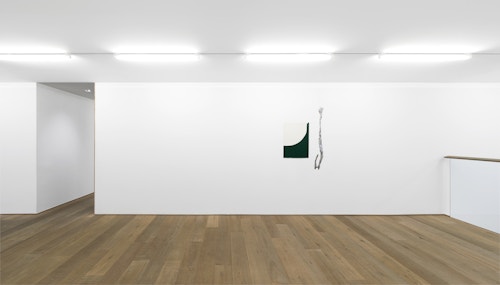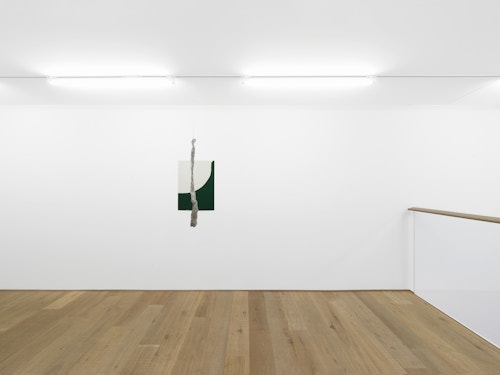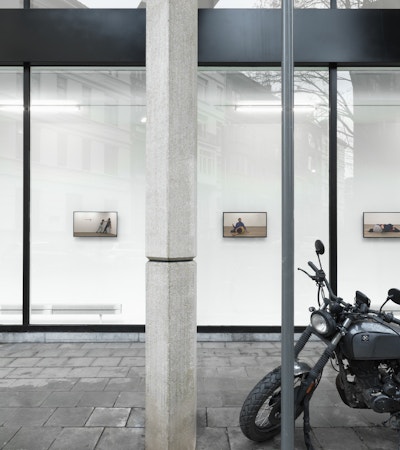
Esther Kläs ll (elle elle) (long lines)
Xavier Hufkens is pleased to present Esther Kläs’ third exhibition at the gallery. ll (elle elle) (long lines) continues the artist’s investigation of form, openness and presence through new works that span sculpture, photography, drawing and installation. Recently, Kläs began collaborating with choreographer and artist Gustavo Gomes. While mounting the exhibition, Kläs and Gomes produced new video works on site, dealing with joy, time and intimacy.
Falling, with no intention of hitting the ground. A space trick. Summer in the apartment is spent barefooted. In each room the floor tiles follow a different pattern. Paviment hidràulic, one by one handmade. They appeared in Catalonia in the 1850s and derive their durability from adding dehydrated Portland cement to coarser layers of sand. The pigment — hydraulically pressed into the surface — becomes part of the tile. Many of them are cracked. You feel them shuffling into place when you step on the carpet. I sit down, straighten my back and try to align my spine with the wall, push the lower vertebrae into the plaster. Let me try this. Three Tuareg men, cloaked in dry-dyed indigo, leave only hands, feet, eyes sticking out. The pigment of their tagelmusts leaches into their skin, becomes part of it. They carry their colour with them. Easy.
— Do you want me to sing? (sings) Blue are the people here…
The Tuareg are an oral society in which memory and speech perform all the functions which reading and writing would have otherwise. Their alphabet, the Tifinagh script, is primarily used for games and puzzles.
— (continues) Blue are the words I say.
I am looking at satellite images of dunes in the Laayoune-Sakia El Hamra region. Barchan dunes can measure up to 30 meters high and 370 meters wide. Desert winds mould their location and form. After a dune has migrated, a ghost shape is left behind.
— And a blue Corvette…
Exactly! Do you remember when we visited Vall de Boí and its Romanesque churches? The frescoes depicted Christ with two halo’s: a small white one behind his head, and a larger (almond shaped) blue one which encapsulated the whole of his body. On our way we passed through Cavallers, one of few mountain ranges in Spain where you can climb on granite. Oldest rock on the block. Long narrow slits make it especially suited for crack climbing. To ascent these rigid lines, you need to familiarise yourself with ‘jamming’, a technique which allows climbers to force a body part into the crack and thus create the friction needed for their upward progress. Ideally you slide a flat hand into the split rock and then curl it into a fist, anchoring your arm in the wall. Once the hand is stuck, it can easily carry the full weight of the body. Climbing is not so much about strength, but about being able to control your motions very precisely. Slow-flowing movements. Stay as close to the wall as possible, carefully shift your balance from one foot to the other, while your fingers probe the surface for holds. The next day we walked down to the valley until we reached the lake, Estany de Cavallers. At the foot of the mountain lies a body of water. Ever heard of a nullah? You find them in the drier parts of India and Pakistan, literally an ‘arm of the sea’. A watercourse. Like the wadi of the Arabs, nullahs are characteristic of mountainous country with little rainfall. At twenty, my father sailed across the wrist of Panama. Clearly the world is shaped by the words of our body. These things go in every direction.
— (starts singing again) In the canyons of your mind, I will wander through your brain, To the ventricles of your heart, my dear, I’m in love with you again!
Esther Kläs (b. 1981, Mainz, Germany) lives and works in Barcelona. Her work is currently on view in The subtle interplay between the I and the me, a one year long exhibition at Kolumba in Cologne, Germany. Other recent exhibitions include Maybe it can be different, Fondazione Giuliani, Rome, Italy (2020), Start, CCA- Center for Contemporary Art Tel Aviv, Tel Aviv, Israel (2019), ola/wave, Proyecto AMIL, Lima, Peru (2017—2018); Our Reality, Fondazione Brodbeck, Catania, Italy (2015—2016); Whatness, Kunsthalle Bielefeld, Bielefeld, Germany (2015); Girare Con Te, Marino Marini Museum, Florence, Italy (2014) and Better Energy, MoMA PS1, NY, USA (2012).

